BIOBASED MATERIAL
Introduction
Biobased material is the green and "future" material. Comparing to synthetic material(also called oilbased material), biobased one is reproducible, degradable and harmonious to earth. Essentially it's the direct utilizing of solar energy just returning to cultivating and collecting which human started ten thousand years ago, so in this sense it's still a "traditional" material redeveloped thanks to science progress and new technology.

Saccharide(hydroxyaldehyde) is the basic component of biobased material. Its rough structure is illustrated above. The hydroxy could be linked or displaced by other groups. Saccharides with large molecule weight(we call polysaccharide) could be decomposed into small one by hydrolyzing or fermenting, or even into alcohol and acid. These are the basic mechanism for manufacturing new biobased material, according to its souce we can roughly classify to below types.
Starch
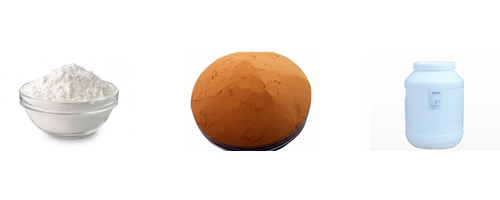
Starch is the mostly accessible biobased material, its basic unit is dextrose. As one starch source, corn's yield reaches 1107 million tons in 2019 and its starch content is around 70%. Another main source is cassava, its content is over 75%.
By oxidizing, heating or acid/alkali/enzyme hydrolyzing, we manufacture dextrin and sugar series: pregelatinized starch, yellow dextrin, maltodextrin,fructose, glucose, etc; by replacing groups, we produce carboxymethyl starch(CMS), hydroxypropyl starch(HPS), acetylated distarch phosphate(ADSP/E1414), cationic starch, crosslinked starch, etc. Compared to original starch, these modified types enhance one or many properties: water solubility, viscosity, thixotropy, binding power and so on, leading them very useful in food additive, paint, papermaking, oil drilling and other places. By hydrogenating or fermenting, we achieve other downstream products like sorbitol, xylitol, hyaluronic acid, lactic acid, xanthan gum, etc. and they can be further modified or processed either. For example, lactic acid could make polylactide which is a famous type of degradeable resin.
Cellulose
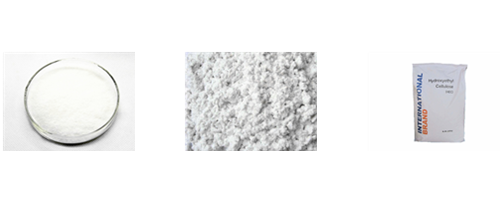
Cellulose is came from plant's fiber like cotton, linen and straw. Its structure is very like to starch only the connecting way of dextrose unit is different. This characteristic makes its hydroxyl group easier be substituted than starch. Since the reaction is further and complete, modified types like HEC and HPMC have better effect than starch espeically in coating and construction field. It's also hard to be enzymolyzed and molecule chain is longer. In some occassions they can replace acrylic polymer in cosmetics and daily use chemicals.
The method of modifying cellulose is same to starch's, though sometimes product's name is little different like hydrolyzed cellulose we often call it microcrystalline cellulose(MCC). And there's less downstream products since outcome of cellulose is just same to starch after deep process.
Guar Gum, Tamarind Gum, Alginate, Pectin
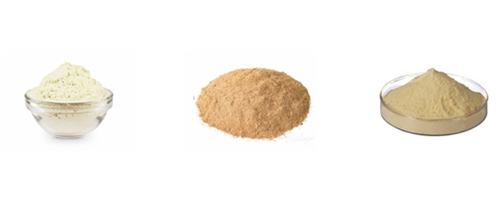
Besides starch and cellulose, there're also different biobased raw material like guar gum(one kind of galactomannan, get from guar bean), tamarind gum(mixture of galactose, xylose and dextrose from tamarind), alginic acid(naturally aciditated polysaccharide from alga), pectin(fructose and heteroglycan from fruit), etc. Since they all belong to saccharide family, the modifying method is similar to starch/cellulose only a little change in reaction condition.
Based on their unique properties, these biobased materials sometimes show better effects in specific fields. Modified guar gum can replace CMC in oil drilling and can make slime gum toy. Tanarind gum shows excellent performance in textile paste printing. Alginate is a superior ingredient to make jelly and pudding. Pectin is widely applied in jam and health food, or as functional additive in cosmetics.
Non Saccharide Material
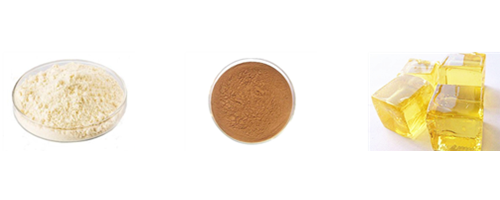
Although saccharide are the major source for biobased material, we find some products from nature with absolutely different chemical structure also perform perfectly and irreplaceable in our industry. For example, protein is one famous associated component in plants. There're soya protein, rice protein, wheat protein(usually called gluten powder), etc. which are popular as nutrient and healthy food.
Lignin is another useful material from wood. By sulfonating and neutralizing with different alkali, we produce sodium/calcium/potassium/ammomium/ferric chomium lignosulfonate which can be considered as anionic surfactant and used as water reducer in construction, stabilizer in oil drilling, dispersant in printing, reinforcer in rubber, fertilizer in agriculture, etc.
From special plants we can get particular materials like nature rubber, rosin, fatty acid, tannic acid, vitamin, lecithin which are already well-known and important to people. For example fatty acid can be used as food additive and rubber agent, and it's also the origin for biofuel, glycerol and surfactant. Since we are expert and there're so many kinds of surfactants, we introduce it in another page, please see content there. >>Surface Material
